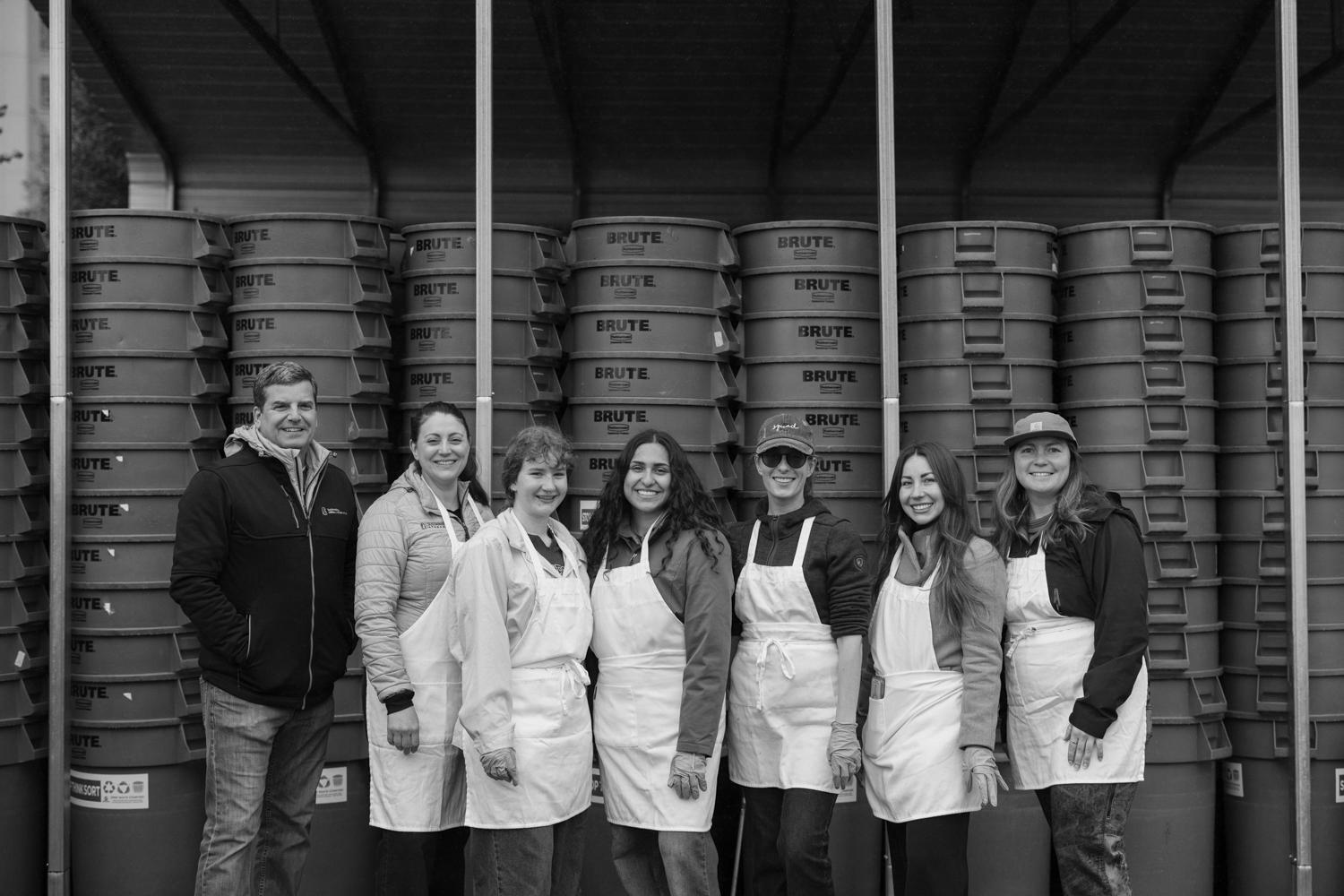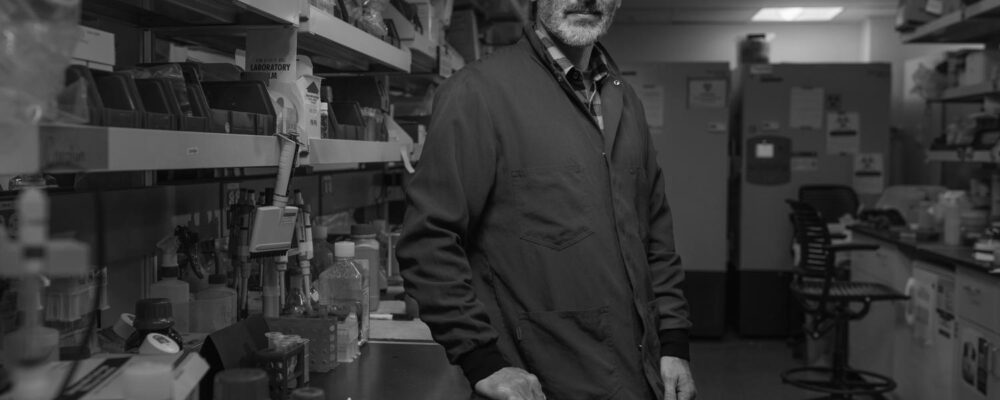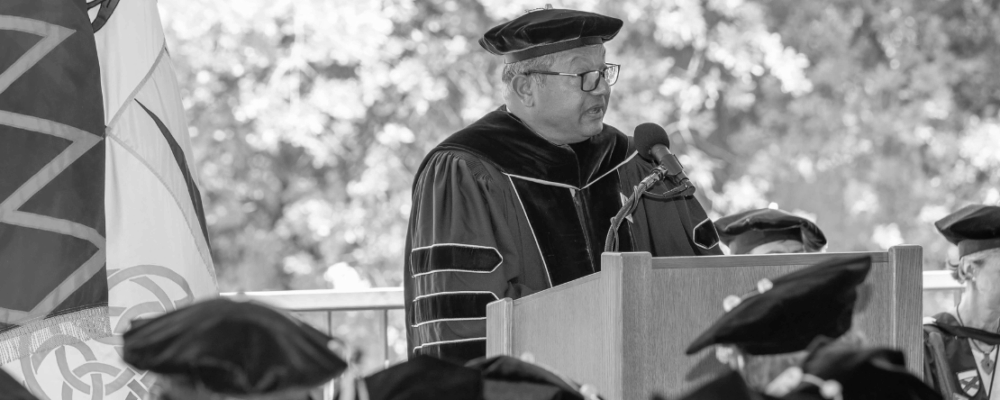On a recent morning in an industrial yard on the east side of campus, a group of Stanford students and staff emptied a trash bin onto a table. Dressed in aprons and gloves, they carefully sifted through the waste.
“The bin came from a residence hall, so inside we found bathroom products, personal items, a lot of food wrappers, food containers, to-go boxes, plastic forks – stuff like that,” said Katelyn Kramer, a junior coterminal student pursuing a bachelor’s degree in environmental engineering and a master’s degree in mechanical engineering.
Kramer, who is also an intern with the Zero Waste team in the Office of Sustainability, is one of the many volunteers who audit Stanford’s trash. The goal is to identify the kinds of waste materials generated by the campus community, measure its volume, and determine how the materials ended up in a landfill bin.
“This data-driven process helps us make smart and sustainable decisions about how we manage Stanford’s waste,” said Julie Muir, the associate director of zero waste systems. “It also helps us develop tools that the campus community can use to improve waste sorting and help the university move closer to its climate goals.”
Waste sleuths
Each month, the team selects a landfill dumpster from a Stanford residence, lab, classroom, office, or other campus locale. Staff with Peninsula Sanitary Service, Inc. bring the dumpster to its yard on Bonair Siding Road, empty it, and then university staff and volunteers sort the contents into bins labeled for food waste, compostable serviceware, paper towels, trash, Styrofoam, plastic/metal/glass, cardboard, paper, plastic film, reusables, and e-waste. Each bin is then weighed. The process takes about 90 minutes and helps the team understand the types of waste produced in a given building and how it is generated.
What goes where
How savvy are you about sorting trash? Brush up on what goes where in less than nine minutes.
“We’re like waste sleuths,” said Muir. “We want to know why, for example, a plastic water bottle ended up in the trash bin rather than the recycle bin.”
Audits produce many useful data points, such as how much waste is generated in a particular location, which items are most common there, and the time of day or year items are generated. Muir noted that their waste characterization study shows that only 25% of items in campus landfill bins are actually landfill material, while the rest could have been reused, recycled, or composted.
“Audits, and the data they produce, tell us that we can do better,” she said. “And they help our team look for solutions that will help the community sharpen their waste sorting skills or stop producing it.”
Sustainable solutions
Based on early findings, the Zero Waste team studied the optimal placement of waste bins and improved campus infrastructure by adding compost and recycling bins across campus.
“We learned that if you’re in a classroom, the best location for a waste bin isn’t on the far wall, it’s near the door, and the recycling, compost, and landfill bins should be co-located so people don’t have to walk further to put items in the correct bin,” she said.
Because waste sorting rules vary across cities, regions, and countries, the team also developed training available through the STARS module. They’ve created the Waste Wise Guide, an online, mobile-friendly tool that helps users find the right bin for items like banana peels (compost), serves as a directory for items that need special collection (i.e., batteries), and provides information about donation outlets. There are search filters for categories such as plastic and lab materials, along with a list of most-searched items.
Waste Wise Guide
On the go and want to make sure you get your trash in the right place? Look up an item on the Waste Wise Guide, a mobile-friendly directory search tool built by Stanford’s dumpster divers.
Student research
Yalcin Aydin is an MBA candidate at the Graduate School of Business who is involved with waste audits. He’s also a Living Lab Fellow developing waste reduction strategies for the university. This academic year, he’s been modeling how Stanford’s waste generation will evolve in the future.
“I’m using the data produced by waste audits to model what is currently in our waste stream and how that might change in the next 15 years,” Aydin said.
We’re like waste sleuths. We want to know why, for example, a plastic water bottle ended up in the trash bin rather than the recycle bin.”
Julie MuirAssociate Director of Zero Waste Systems
He’s particularly interested in understanding the efficacy of initiatives that could support sustainable waste management and reduce waste generation. For example, he’s modeling how a mandate to eliminate single-use disposables could affect campus waste streams. His findings will be shared with Stanford’s climate advisory board in June.
Waste audits also help inform Kramer’s own research. She’s studying the impacts of foreign waste in Ghana, home to one of Africa’s largest e-waste processing sites, known as Agbogbloshie. The site is rife with discarded technology from Western nations and thus heavily polluted with toxins.
“I’m thinking a lot about how our waste impacts other people, and how recycling or reusing waste, or how good engineering can reduce those harmful effects,” she said. “These waste audits help paint a similar picture that’s really helpful in my research.”
Waste audits are open to the entire campus community. Anyone interested in volunteering can reach out through the Sustainable Stanford Contact Form.
“Stanford University, officially Leland Stanford Junior University, is a private research university in Stanford, California. The campus occupies 8,180 acres, among the largest in the United States, and enrols over 17,000 students.”
Please visit the firm link to site






